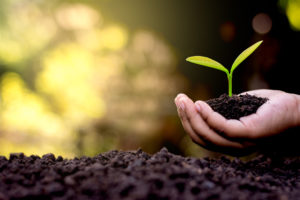01.10.23On Happiness…and Happy Students

Gratitude, Social Connection, Altruism
Happiness is one of the most misunderstood of human emotions. My colleagues Denarius Frazier, Hilary Lewis & Darryl Williams and I write about this in Reconnect: Building School Culture for Meaning Purpose and Belonging.
Many people define happiness as meaning roughly the same thing as “pleasure.” They assume students will be happy if they are “having fun.” But research (especially that of Martin Seligman) suggests that happiness actually consists of three things for most people: pleasure, true, but also engagement and meaning. When we are engaged in activities that make us feel a sense of purpose and connection we are happy. In fact, Seligman found, engagement and meaning correlate more strongly to happiness than mere pleasure.
This is a theme that Shawn Achor strikes in his book The Happiness Advantage and in this interview with Zack Friedman.
I define happiness as the joy you feel growing toward your potential. This definition is actually crucial; otherwise, we pursue happiness the wrong way. If happiness is pleasure, it is short-lived and increasingly hard to get. But joy is something you can experience even when life is not pleasurable… This is the joy you use to fuel yourself to see your true potential.
I think that’s really useful for schools to think about. Young people are made happy by meaning and engagement more than pleasure. By feeling connected to and part of the group and also by pursuing and accomplishing real goals. Want to make your class happy? Challenge them. Cause them to work hard. Make them feel like a team. Socialize them to them make small sacrifices for each other and the community–and thus become more connected to the community (we are connected this is to say, by what we give as much as by what we get).
There’s more. Friedman asks Achor what the three best ways to create happiness are.
Achor’s response might surprise you.
Gratitude, social connection, and altruism. You can transform any event or environment by being grateful for it. The greatest predictor of long term happiness is social connection. And altruism creates the greatest return on your investment in terms of positive actions. All three require effort, habit and discipline, but they pay off by making happiness easier.
Gratitude, he writes in The Happiness Advantage–and we discuss in Reconnect–creates a “cognitive after image.” If you make a habit of looking for things to be grateful for, that are good in your life, you start to see more of them. You feel better about the world. You notice that you live in a place that loves you. And this causes you to be far more likely to thrive.
This is interesting because schools often do the opposite. They ask young people to look for the ways they have been hard-done by the world. They are often blind to the beneficial aspects of altruism. They ask students to think about what they can take or what they deserve, not what they can give and what they owe. Regardless of what you think about their actual place in society–true that they might be hard done by; true that they might be owed–it is better for them psychologically to focus them on gratitude, social connection and altruism.
Much of Reconnect is about wiring those things into the fabric of schools with the specific purpose of making the places that are psychologically beneficial for young people.